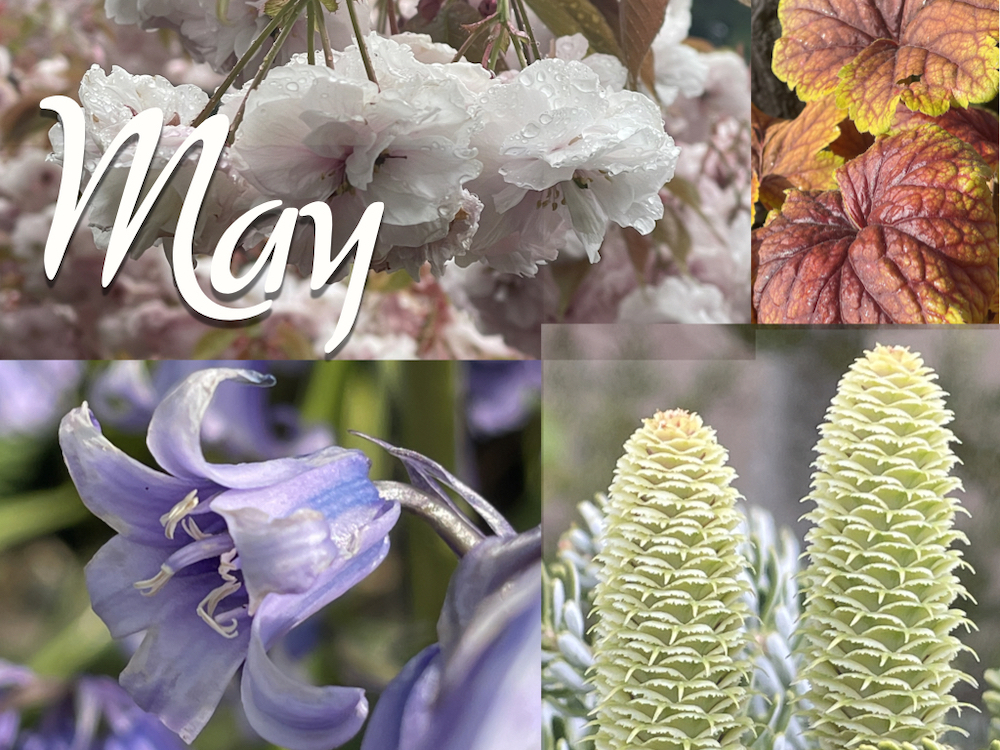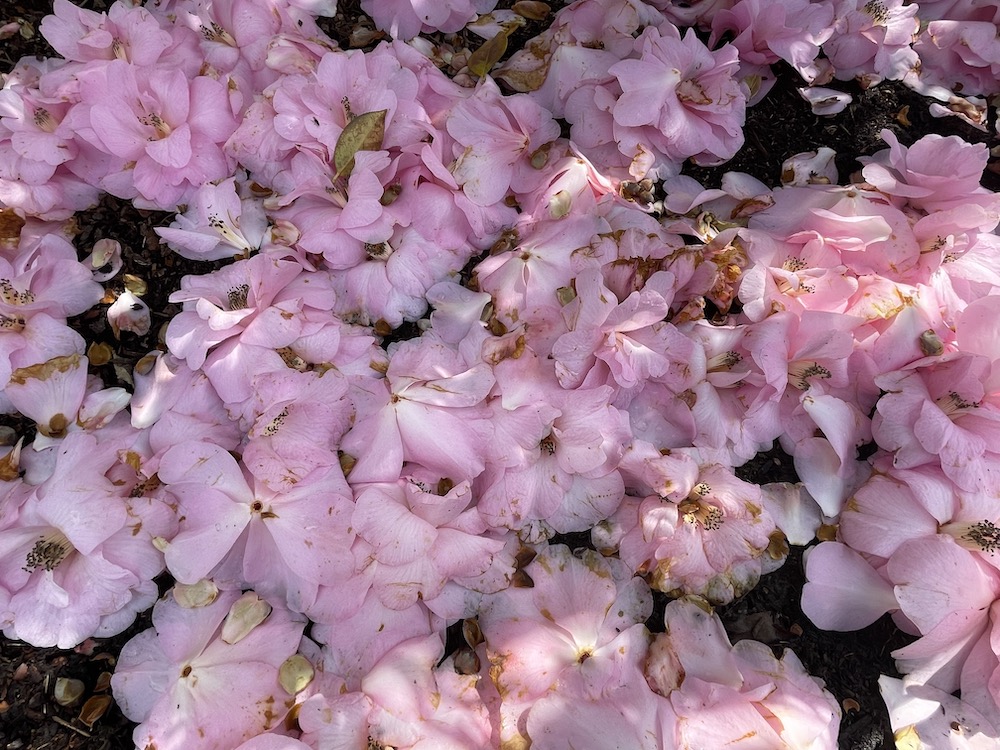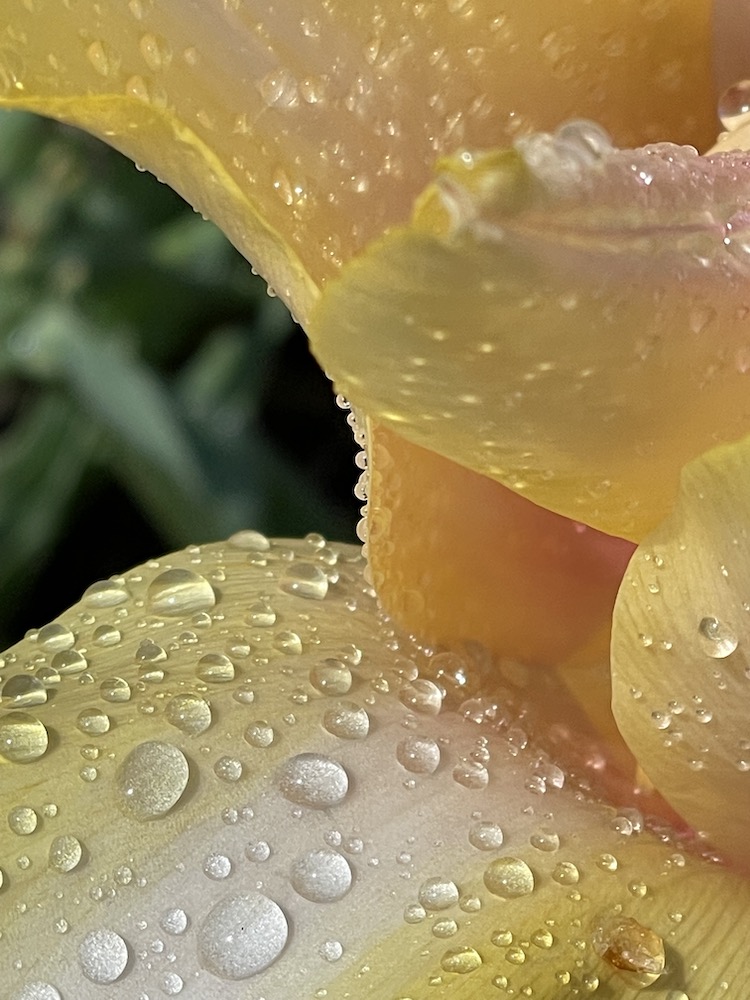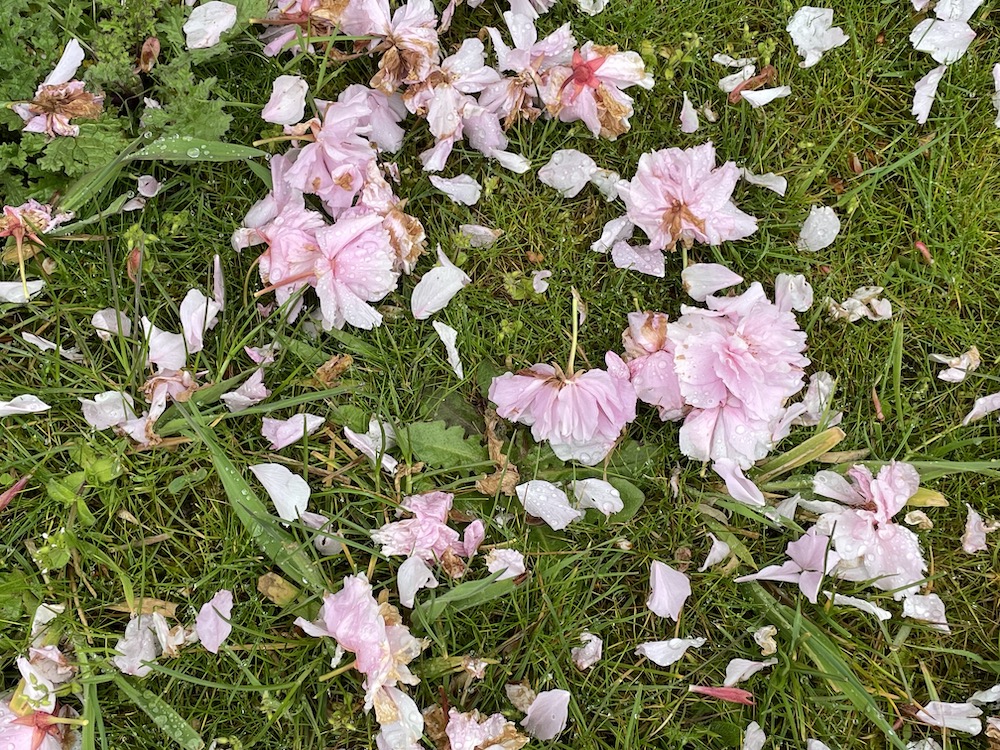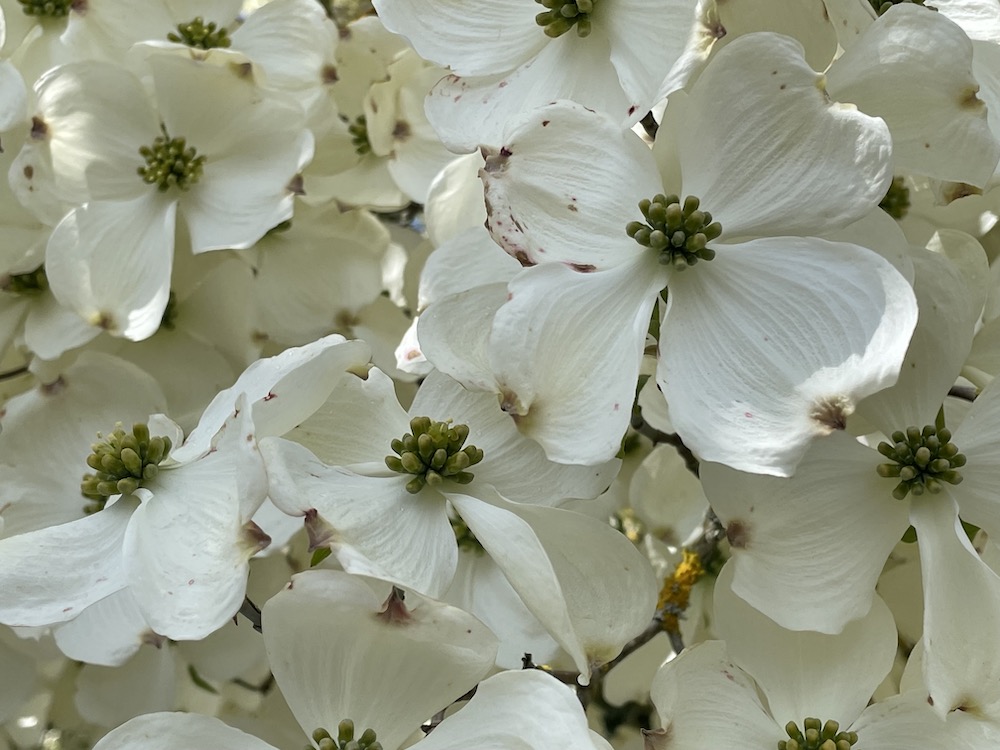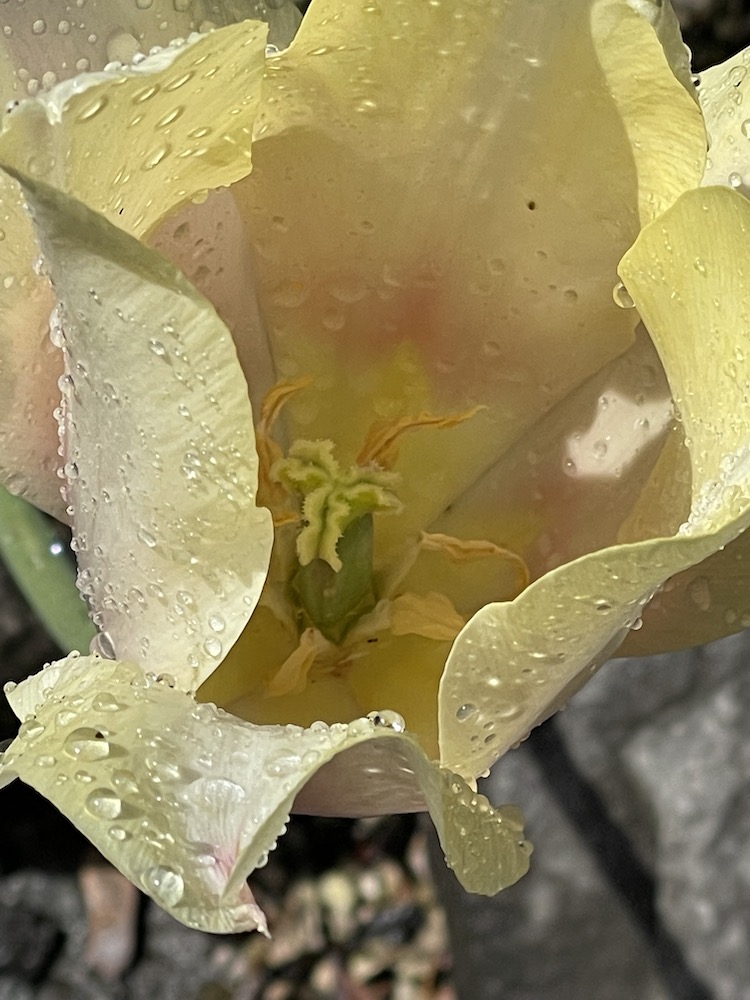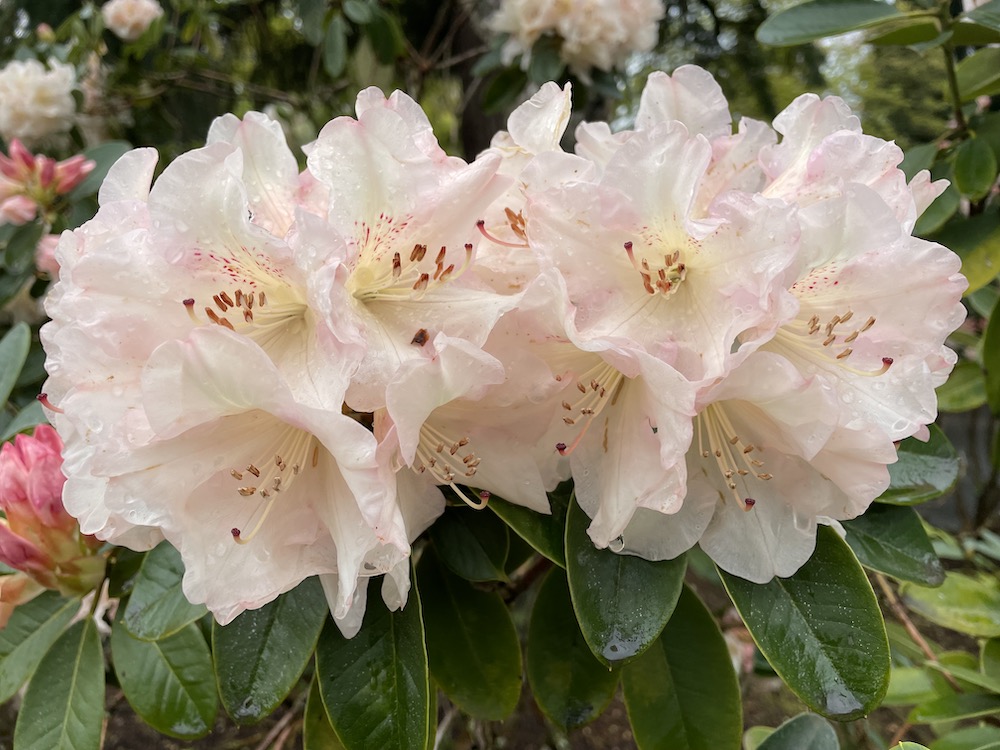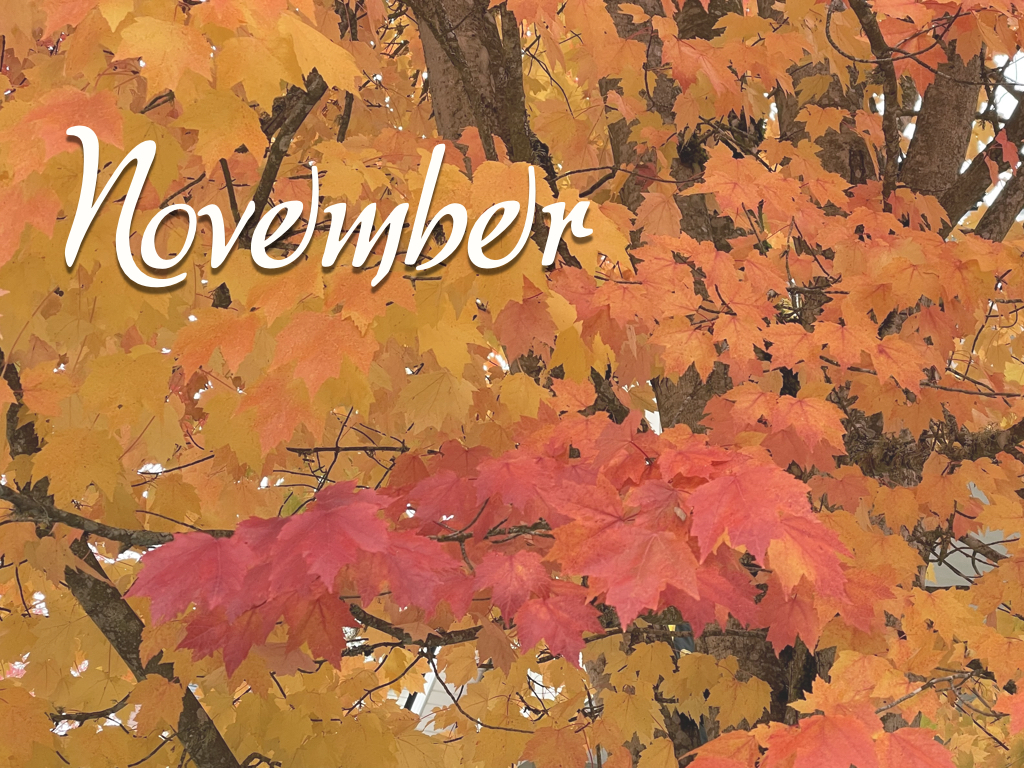
This guide is tailored for the western valleys of Oregon and Washington.
YOU can help to make the world a better, a more friendly, loving and beautiful place by being a good steward of the spot on this earth that you are privileged to be borrowing for a time—your garden. Nathan, the Treevangelist, urges you to treat your spot on this planet like your own personal Garden of Eden paradise. Then notice the joy that it will bring to you! This is your divinely mandated responsibility. Your trees, shrubs, flowers and the wildlife in your yard will express their smiling appreciation back to you and to others as they radiate love, joy and beauty bursting forth with vibrant and verdant life. Below is a to do list to help you to do just that.
Sun, sun, sun and more sun until the rains hit hard and suddenly. Now it’s rain, rain, rain and more rain. Halleluyah! The trees need it now more than ever. The rain is what keeps our western valleys so lush and green. This why Oregon and Washington are top nursery productions states. This is why the Oregon Trail ended in the Willamette Valley of Oregon.
Yes, essentially, the hot summer of 2022 lasted more than two months longer than usual with an unusually early start date at the beginning of July and ending date of October 21 for the northern Willamette Valley, which is when the fall rains began. This means that many trees and shrubs began to feel the stress of thirst. I have never seen more native Douglas-firs, western red-cedars, Oregon white oaks, alders, black cottonwoods and other native species experiencing stress and even dying than I have seen this summer. When you see 150 to 300 year-old oak trees turning brown and beginning to die, you know that this is a new phenomenon for them. Alarming! Not much we can do except pray for rain, and truly our prayers have been answered. Since October 21, I have dumped some eight of rain out of my Portland metra area rain gauge in just a little over two weeks. So get your Gortex on and step and into the rain and count your blessings! Thank you LORD!
While you’re at it, take a few moments and scroll back through this same Good News Tree Service, Inc. blog and check out the archives for any tree and plant care articles that you may have missed. Also check out our YouTube channel at https://www.youtube.com/channel/UCvcu2lL9NpgoXQtUFYyQShw, our Facebook page at https://www.facebook.com/GoodNewsTreeService/ and our main website at https://goodnewstree.com. Please enjoy!
Readers’ suggestions on how to improve this list are gladly solicited. If you, the reader, have any suggestions for additions to this month’s list, please put them in the comments section of this article, and I will add them to the list. Thank you in advance! — Nathan
Tree and Shrub Care
- Fruit tree sanitation. To prevent possible spread of leaf diseases, rake up and remove leaves from around the base of fruit trees.

Slow down…stop…take a deep breath…look up! Pause and reflect at the fleeting beauty of the trees’ autumn foliage. DaVinci, Michelangelo, Rembrandt, van Gogh and Renoir never painted anything so glorious! And it’s yours to enjoy for free! No cost except your time, eyes to see and your heart embrace.
- Fruit tree pruning. After the leaves drop is an excellent time to prune trees that are done fruiting and for aesthetics, since wounds will heal more quickly in warmer weather than occurs in winter. This is also a good time to reduce the height of overgrown fruit trees, since they are likely to produce fewer water sprouts now then when pruned in the spring.
- Large trees. After each major weather event, check your trees for damage such as broken or hanging limbs. If you have concerns or questions about your trees, have an ISA Certified Arborist with an ISA Tree Risk Assessment Qualification (like Good News Tree Service, Inc.) inspect your large trees for damage or the potential of failure due to weak root systems and defects in trunks and branches.
- Mulch. Wood chips from your local tree service is the best mulch bar none that you can put on your urban soil to beef up its fertility to improve your plants’ health. Tree service wood chips are a different look than your typical barkdust mulch, and it may some adaptation on your part, but the price of this mulch is right—usually it’s free. Barkdust doesn’t improve your soil quality and does little to improve plant health, wood chips do, however. Apply two to three inches of mulch (e.g., bark dust, garden compost or wood chips) on all of your shrub beds. Covering bare dirt areas in your yard with mulch helps to prevent soil compaction from rains, and weed growth, keep soil temperatures lower during the hot weather (a benefit to roots), and helps to enrich our heavy clay soils. Also apply several inches of mulch over the tops of any perennials that may suffer damage from freezing temperatures to insure that they survive the winter.
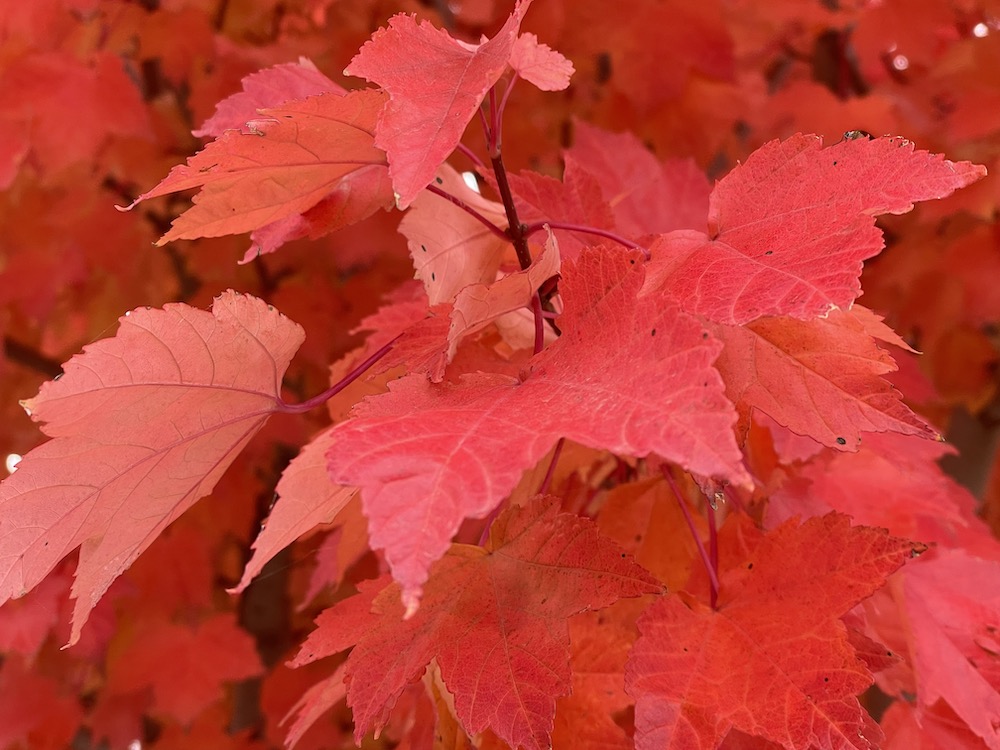
- Pine trees. This is the time of year to prune coast or shore pines (Pinus contorta) and Scotch or Scots pines (Pinus sylvestris). These two pines are especially susceptible to the sequoia pitch moth whose larvae burrow into the tree trunks during the growing season (April through September) causing the trees to exude large amounts of unsightly pitch globules. While this seldom kills the tree, the bleeding of sap is not good for the overall health and vigor of the tree. It is advisable, therefore, not to prune these pine trees during the growing season, since the pruning cuts attract the moth, which then lays eggs on the tree, which hatch into tree-burrowing larvae. Pruning should be done on your pines from November to March.
- Plant or transplant trees and shrubs. After the cold, seasonal rains have started is a good time to plant or transplant ornamental trees and shrubs. Cooler weather means less transplant shock to the plants, and over the winter and spring, they will have time to begin to acclimate to their new environment before the stress of the next summer season occurs.
- Pruning of trees and shrubs. You can do all aesthetic pruning of all ornamental shrubs and trees (except pines) at any time of the year in most cases.
- Pruning of large trees. Most trees in the temperate western valleys of Oregon and Washington can be pruned anytime of the year. If you’re not sure what to do, or how to do it, call Good News Tree Service, Inc. for a consultation, pruning lessons or to have us do the pruning for you. It is likely best to wait for cooler weather to prune stressed or sick looking trees or to do major pruning on trees. Call us if you have questions about this. Heavy pruning of some trees in the summer, especially conifers, can weaken or even kill them.
- Storm proof your larger trees. Checking your trees for hazards and then take the appropriate measures to protect your trees from storm damage. If you’re not sure about the condition of your trees or even what to look for, call Good News Tree Service, Inc. for a free on-site consultation.
- Tree removals. Tree and shrub removal and stump grinding can be done all year long.
- Trees—storm issues. With the advent of winter storms and the potential damage that they may inflict upon your trees, have an ISA Certified Arborist with an ISA Tree Risk Assessment Qualification (like Good News Tree Service, Inc.) inspect your large trees for the potential of failure due to weak root systems and defects in trunks and branches. This can be done anytime of the year, but now, before the winter storms hit, is an excellent time to proactive assess the condition of your trees for potential limb and trunk breakage.
Plant Health Care
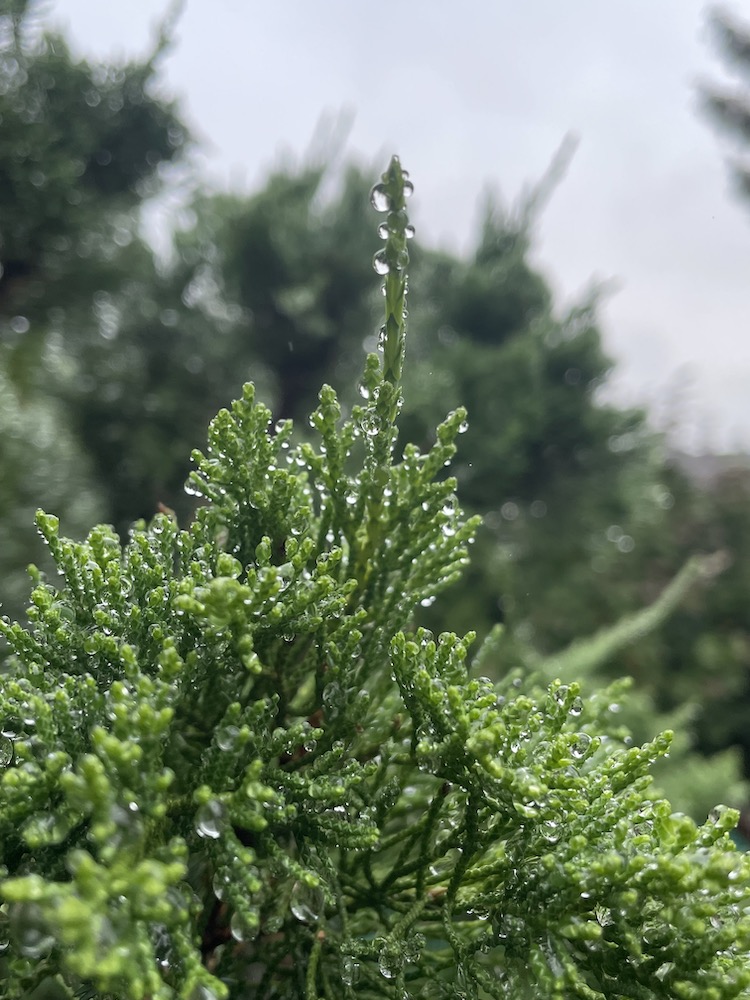
- Arborvitae Berckmann’s Blight (Platycladus orientalis). Spray with copper twice in the fall (late Sept. and early Oct., and again in early Nov. Spray again in early spring (Feb to Mar) if disease is severe.
- Deep root fertilize trees and shrubs. If the soil temperatures permit, hire Good News Tree Service, Inc. to fertilize your ornamental shrubs and trees (via hydraulic injection) to improve their root health during the winter season and to prepare them for the upcoming spring and summer growing season. When you do this, you will notice a marked improvement in the looks of trees and shrubs.
- Fertilize trees and shrubs. Use with a low nitrogen granular fertilizer. The fall and winter rains will slowly dissolve the fertilizer into the soil and down into the roots. Roots continue to grow throughout the winter, so it’s good to feed them for the overall health and vigor of the plant. You can also have Good News Tree Service, Inc. deep root fertilize your trees and shrubs via injection of liquid fertilizers and soil conditioners directly into the root zone of the tree through hydraulic pressure.
- Magnolia bacterial blight. If your magnolia bush or tree has blighted leaves and flowers (dark, irregular spots) and the new shoots wilt and die in the spring, it may be magnolia bacteria blight. To treat, the magnolia needs to be sprayed once in the fall and twice in the spring near bud break.
- Verticillium wilt. Treat maples and other trees against this potentially lethal soil borne fungal pathogen. The fall is the best time to treat your plants against this disease, and spring is the second best time. Maples are especially plagued by this disease. During hot weather, symptoms include smaller than normal cupped leaves in the upper canopy, often with the death of the entire branch occurring. Maples are the hardest hit trees by this disease. Other trees susceptible to this persistent and potentially lethal fungal root disease include ash, box elder, golden rain tree, mountain ash, prunus spp. (cherry and plum), redbud, tree of heaven or silk tree, southern magnolia, tulip tree.
- Willow twig (bacterial) blight. Apply copper spray fungicide after the leaves drop.
Elsewhere in the Garden
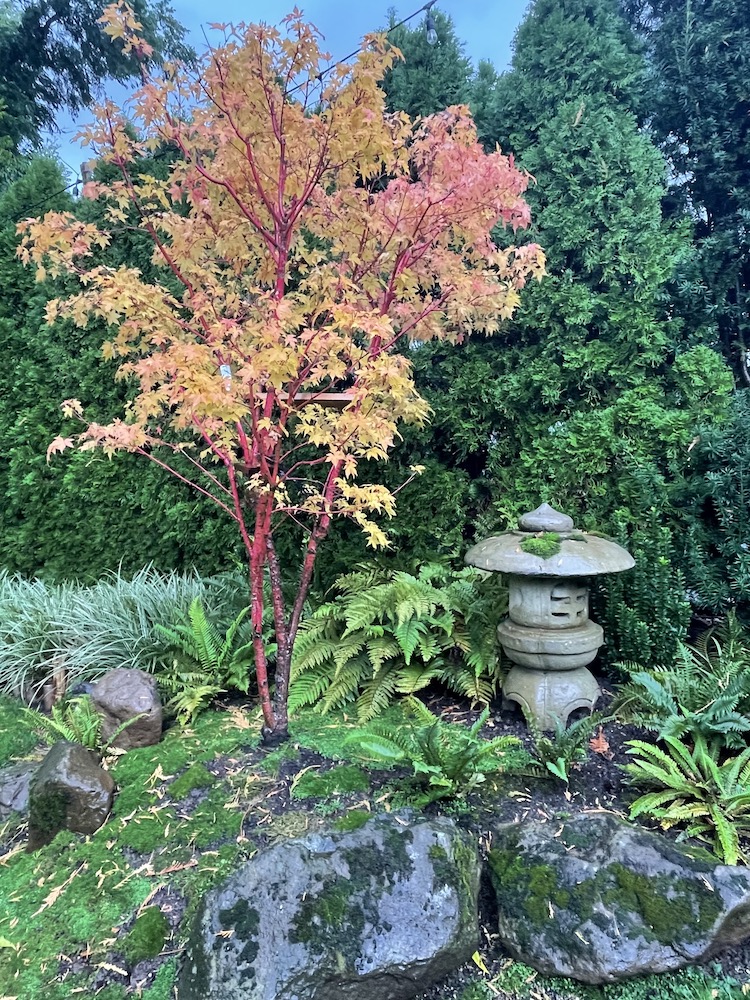
- Birds. Feed the songbirds. Dutifully maintain your bird feeders. As winter comes, birds have a harder time finding food. This includes both seed and suet feeders. During dry spells, keep your bird bath watering hold full of fresh water. Caring for the local wild birds brings life and excitement to your backyard by turning it into a bird-friendly sanctuary. The birds will thank you for your generosity by providing you with hours of entertainment, and by eating insect pests that harm your ornamental trees and shrubs. Remember to feed your local humming birds that overwinter in our region. If possible, fill your humming bird feeders with a syrup that contains only 100 percent sugar (e.g. sucrose or dextrose) minus any artificial sweeteners, red dyes and other chemicals. Your birds will be healthier for it. You can find excellent bird care products and advice from knowledgeable and caring professionals at your local Backyard Bird Shop.
- Bulbs. Plant spring flowering bulbs.
- Faucets. Winterize your outdoor faucets. Protect outside faucets from subfreezing temperatures, and drain and store garden hoses in your garage or garden shed.
- Irrigation system. Winterize your irrigation system. Provide winter protection to in-ground irrigation systems by draining them and insulating valve mechanisms.
- Ivy. Cut English ivy off of the base of trees. (This can be done any time of the year.)
- Leaf clean up. Rake and dispose of ornamental tree leaves, or better yet, compost them and then spread the decomposed leaves back onto your shrub beds as a mulch next year.
- Mulch. Mulch your shrub beds. Put a two to three inches of mulch (e.g. bark dust, garden compost or wood chips) around perennials and other plants that might be sensitive to subfreezing weather. Also, spread a fresh layer of mulch (e.g. bark dust, garden compost or wood chips) on all the bare dirt areas in your yard to prevent soil compaction from rains, to prevent weed growth and to enrich and help to condition your heavy clay soils. Adding a layer of mulch (several inches thick) over any tender perennial flowers, especially if the weather turns extremely cold and the ground freezes, will prevent the death of flowers such as dahlias.
- Planting trees and shrubs. This is a good time of the year to plant trees and shrubs once the weather cools down and the rains start. Visit your local nursery and select your favorite ornamental shrubs and shade trees. After planting your new shrubs, just make sure that you water them well immediately and regularly subsequently for the first two or three summers until their roots get established.
- Slugs. Put slug bait around winter flowers.
Rose Care
- Pruning. Prune your roses down by about one-third and remove any dead flowers and dead or diseased canes after the leaves have yellowed or have fallen off.
- Mulch. Heavily mulch your roses. Organic mulch (such as wood chips, rotted compost, rotted manure) is the best. While barkdust helps to hold moisture in the soil, it contains little or no nutrients, so it doesn’t feed the soil and thus won’t feed your roses.
- For more information on the care of roses, go to the Portland Rose Society website at https://www.portlandrosesociety.org/all_about_roses.html.
Lawn Care
- Fertilization. Late in the month, apply winter fertilizer which is vital to maintain healthy turf.
- Mowing. Continuing mowing as needed while the grass is still growing if conditions are not excessively wet and cold.
- Overseed bare spots. When the weather begins to cool down from the summer heat, yet while the grass is still growing, and the fall rains begin is an excellent time to overseed bare or thin spots in your yard. Fall is the best time of the year to reseed bare are of your lawn, while spring is the second best time.



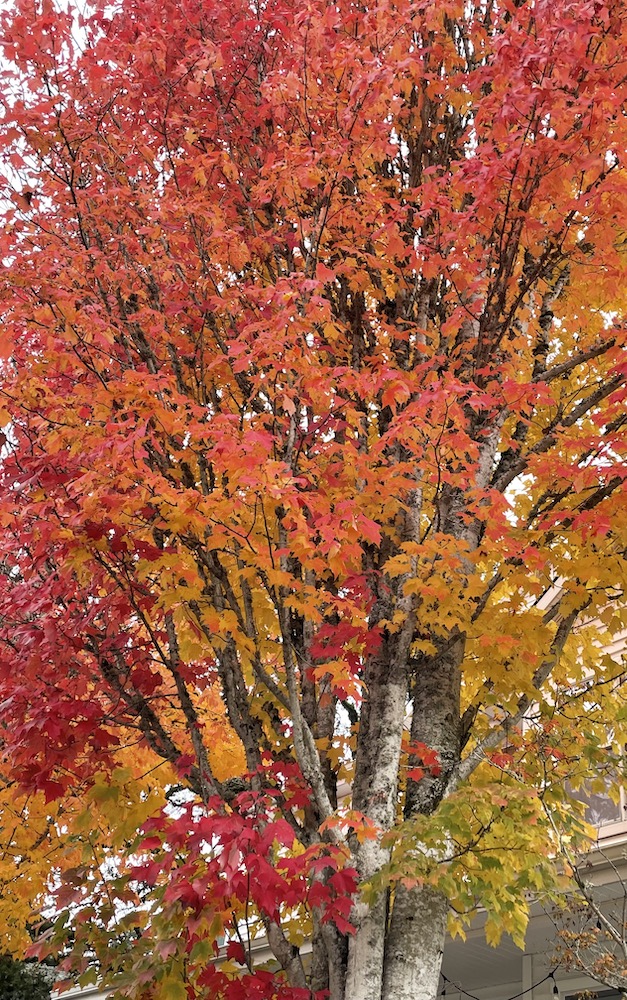
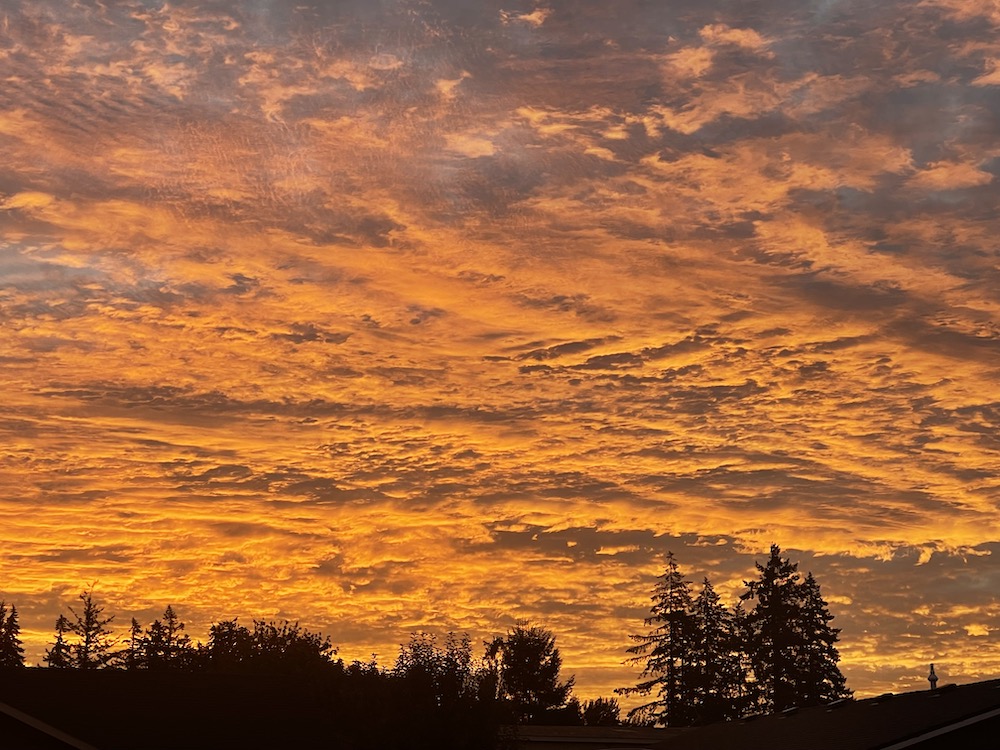
Oranges are the hues of choice in which nature’s chooses to adorn itself in this season. Enjoy this display in its magnitudinous glory.
Step away from it all for a moment. Relax, let your heart rate and blood pressure diminishes as you allow the peace and joy of it all to settle in and overwhelm you.
Now look up and allow a prayer of thanksgiving to bubble up from the depths of your heart. How to you feel? Try it. You might discover something new and wonderful from deep inside, outside and beyond yourself. Shalom


